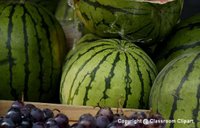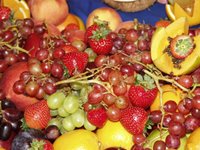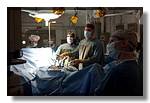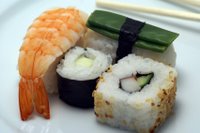
Since mom has been diagnosed with diverticula, I have been
trying to change her diet. She was hopitalized the first time for a week and this last time we went to two emergency rooms the same night she was in so much pain.
She eats like a bird. She says she can't eat much for breakfast. One morning I made her bacon, eggs, and toast (high fiber bread), she said her stomach hurt after she ate. She ended up taking a pain pill and layed back in her recliner most of the day(those pills knock her out). That was the last time she let me fix her breakfast.
I had to give in and let her go back to her three little powdered donuts each morning. I tried to get her to take a Benefiber pill each morning. They have a good flavor and are chewable. That didn't work either....she said it filled her up and then she couldn't eat anything.
She is only able to eat small amounts at each meal. She starts hurting if she eats what I consider a "normal" size meal. I try to get her to snack on fruit during the day.
THINGS I HAVE CHANGED/ADDED TO HER DIET: 1. Only use fresh or frozen vegetables (every meal now)
2. Changed to "Ezekiel" bread (found at health food stores) It is a sprouted grain bread and is made without
ANY flour. Contains 3% Fiber and no sodium
3. I have added fresh plums, watermelon, nectarines and peaches to her diet
She has also increased the amount of water she drinks every day. I know she still isn't drinking the recommended amount (8-10 glasses), but she's doing better.
It's like anything we do in our life. Change is never easy. Whether is a change in diet to lose weight or a change in diet to prevent another diverticulitis attack.
We're just taking it one day at a time.





